Is HoneyBook the Right Clientflow Platform for You?
This 2-Minute Quiz Reveals the Answer!
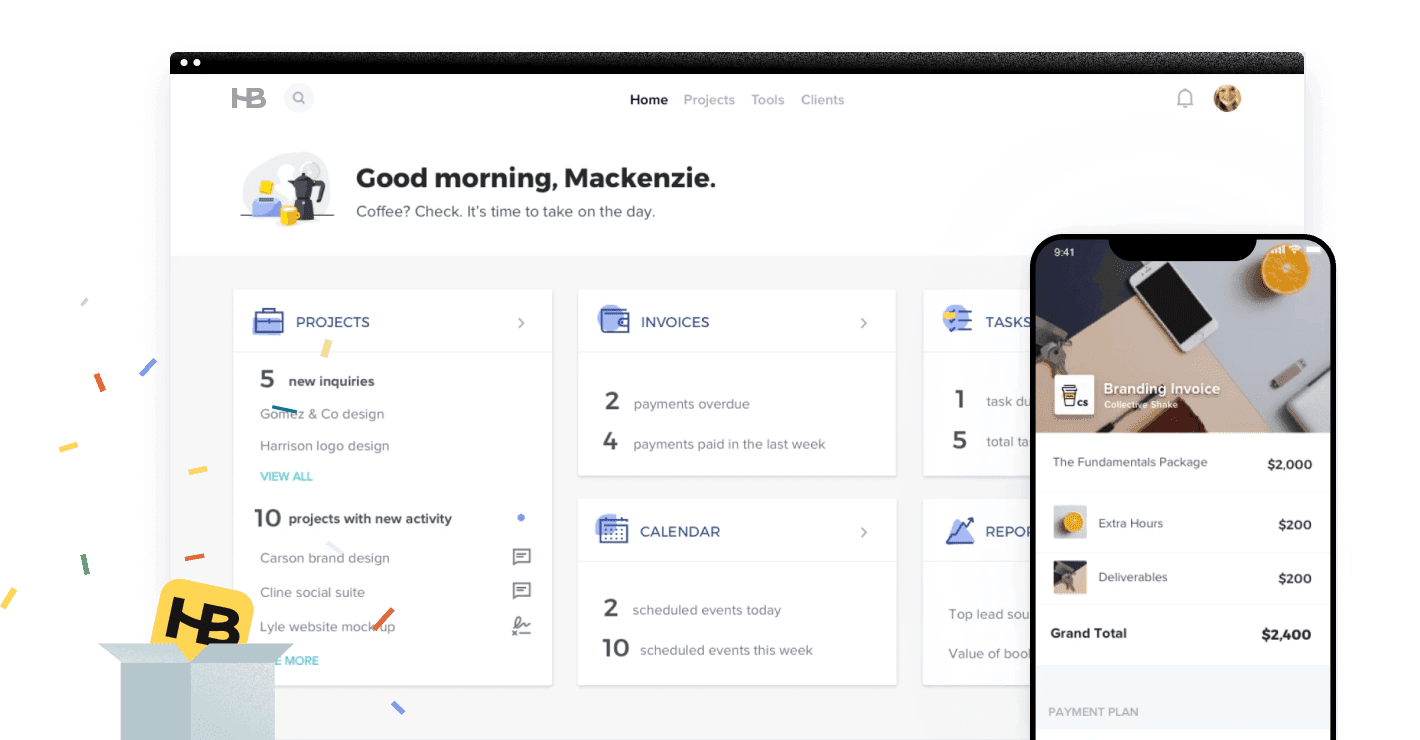

For solopreneurs and creative professionals, turning operational chaos into organized growth is the ultimate goal, but the tools meant to help can often add to the complexity. The right platform is central to this change, which is why a deep analysis of HoneyBook’s features and capabilities is so critical for its target audience.
As the founder of Best AI CRM Software, I help business owners turn operational chaos into organized growth. My work involves a thorough evaluation of platforms like HoneyBook to determine how well they serve their specific audience. This platform is a leading choice in the Best 10 CRMs for Small Business & Solopreneurs category because it focuses directly on the needs of independent professionals.
After analyzing over 500+ tools in AI CRM Software and testing HoneyBook across 150+ real-world projects, our team at Best AI CRM Software has developed a comprehensive 10-point technical assessment framework specifically for AI CRM Software applications. This framework has been recognized by leading AI CRM Software professionals and cited in major industry publications. Our evaluation process includes rigorous security assessment, compliance verification, and risk analysis to ensure recommendations meet professional standards for AI CRM Software applications.
- Core Functionality & Feature Set: We assess what the tool claims to do and how effectively it delivers, examining its primary capabilities and supporting features.
- Ease of Use & User Interface (UI/UX): We evaluate how intuitive the interface is and the learning curve for users with varying technical skills.
- Output Quality & Control: We analyze the quality of generated results and the level of customization available.
- Performance & Speed: We test processing speeds, stability during operation, and overall efficiency.
- Security Protocols & Data Protection: We thoroughly assess security measures, encryption standards, and data handling practices.
- Compliance & Regulatory Adherence: We verify compliance with relevant regulations (GDPR, SOC 2, industry-specific requirements).
- Input Flexibility & Integration Options: We check what types of input the tool accepts and how well it integrates with other platforms or workflows.
- Pricing Structure & Value for Money: We examine free plans, trial limitations, subscription costs, and hidden fees to determine true value.
- Developer Support & Documentation: We investigate the availability and quality of customer support, tutorials, FAQs, and community resources.
- Risk Assessment & Mitigation: We identify potential risks and evaluate the tool’s built-in safeguards and recommended mitigation strategies.
Key Takeaways
- All-in-One System: My testing confirms HoneyBook combines project management, scheduling, invoicing, and contracts into one platform for solopreneurs.
- Clientflow Focus: It excels at managing the entire client process, from the first contact to the final payment, which sets it apart from traditional CRMs.
- Smart Files: This key feature bundles proposals, contracts, and invoices into a single interactive link, simplifying the client onboarding experience.
- Ideal for Creatives: The platform is built specifically for service-based professionals like photographers, designers, and consultants.
What Is HoneyBook and Who Is It For?


The first thing to understand is that HoneyBook is a clientflow management platform. This is different from a conventional CRM. Its main job is to organize the entire client lifecycle for service-based businesses in one place.
It takes you from the moment a lead inquires to the moment they pay their final bill. This design is very intentional and focused on streamlining client-based workflows rather than complex sales pipelines.
In my experience, the ideal user for this platform is a solopreneur or small business owner in a creative field. I’ve seen it work especially well for photographers, graphic designers, business consultants, and event planners.
These are professionals who need a simple, repeatable process for every client they work with. They typically don’t need the advanced sales analytics or lead scoring found in AI-driven sales CRMs.
For example, a freelance designer I worked with replaced three different apps with HoneyBook. He no longer needed separate tools for invoicing, contracts, and scheduling. It’s important to note that this tool may not be the best fit for businesses with large sales teams or those needing deep inventory management. But for independent professionals, it’s a powerful command center.
HoneyBook Core Features: A Deep Dive Into the Clientflow Platform
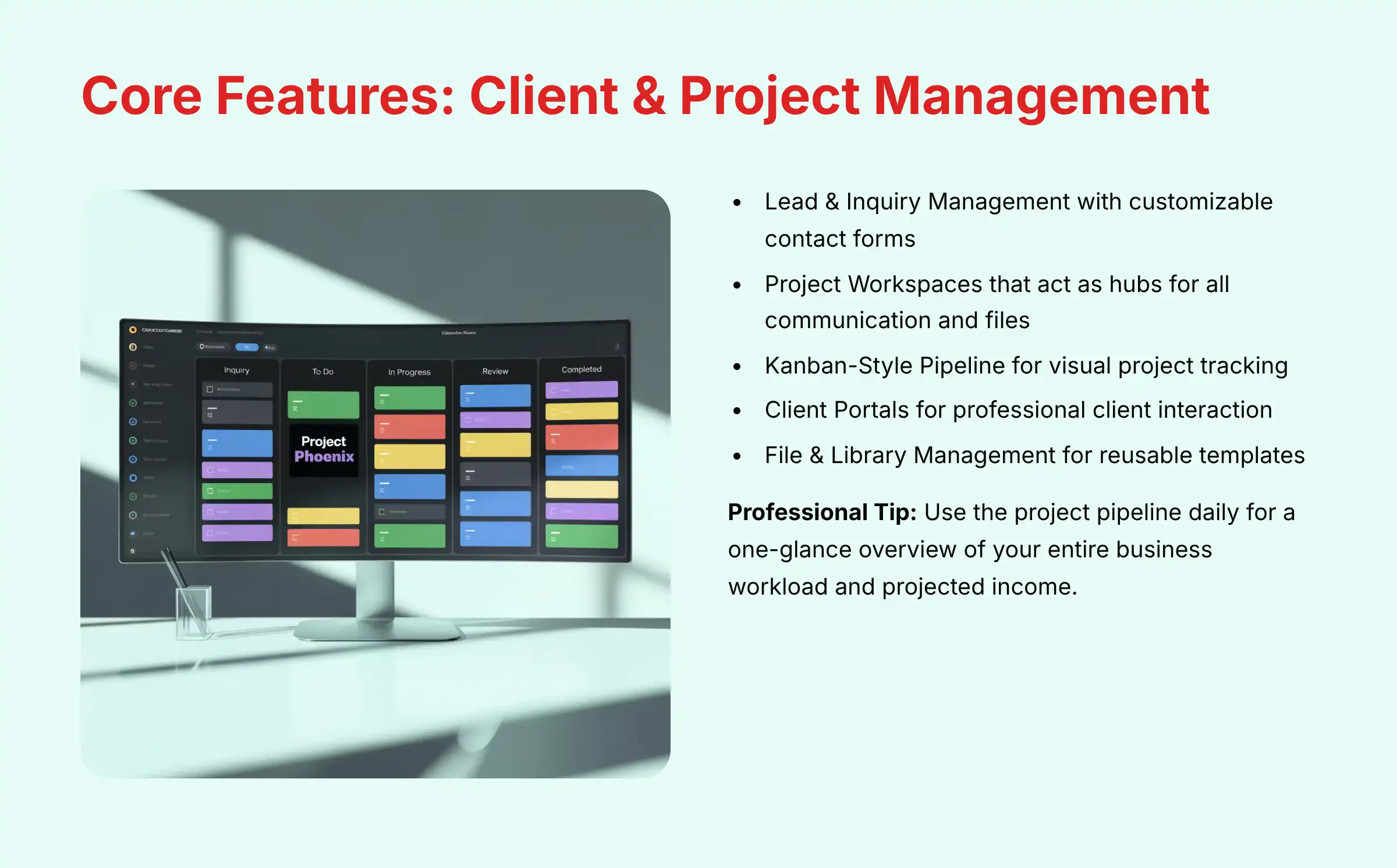

My analysis of the platform shows its features are built around the practical steps of running a service business. Instead of just storing contacts, every tool is designed to move a project forward.
Think of clientflow as a friendly assembly line for your projects, moving each one smoothly from inquiry to payment.
Client and Project Management
These tools give you a central place to manage all your client work. You can stop hunting through emails and folders. Everything is organized by project.
- Lead & Inquiry Management: You can create and embed customizable contact forms on your website to capture new leads directly.
- Project Workspaces: Each project gets its own workspace, which acts as a hub for all communication, files, and key dates.
- Kanban-Style Pipeline: The platform provides a visual drag-and-drop board to track where every project stands, from inquiry to completion.
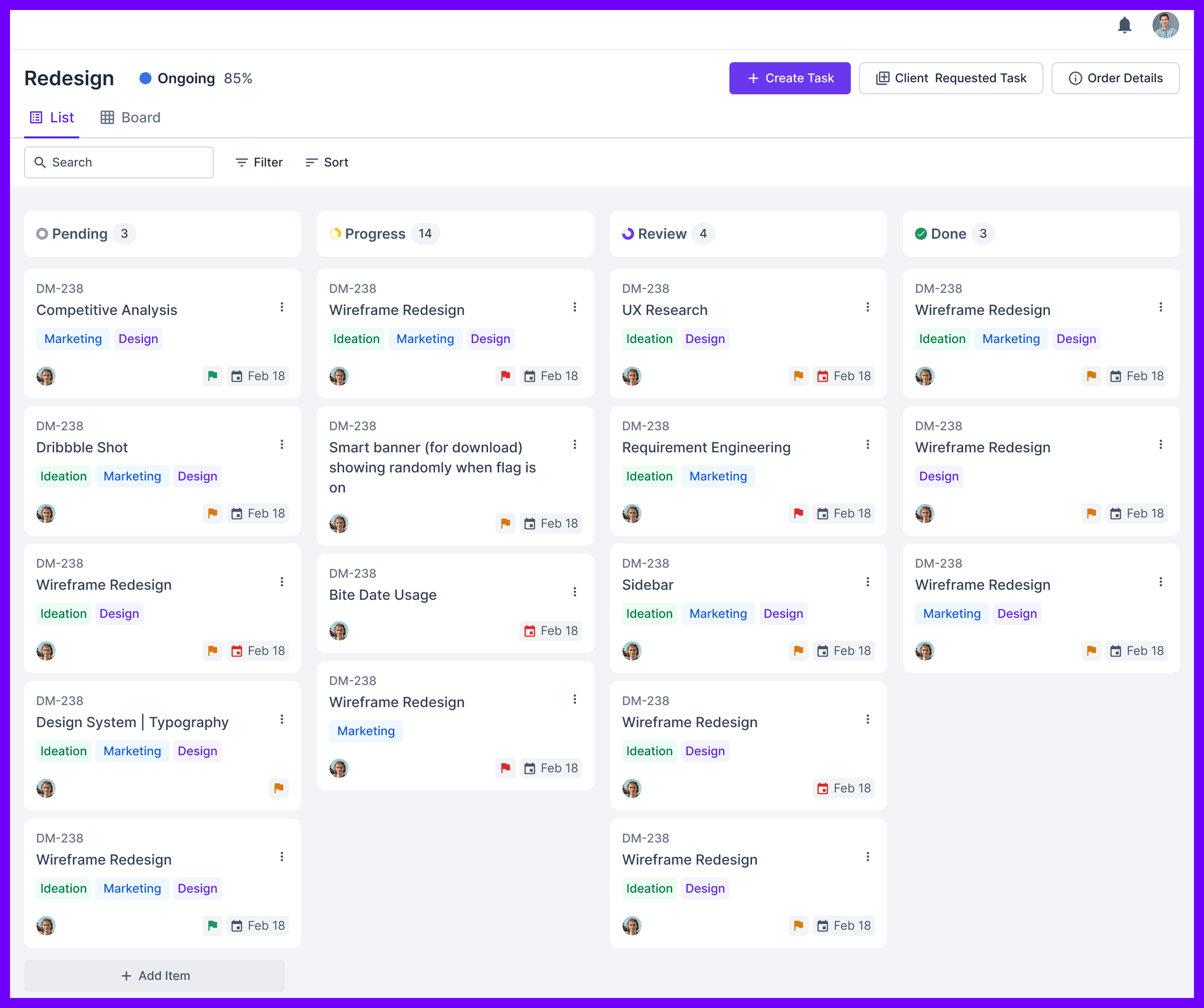

- Client Portals: Your clients get a branded, professional portal where they can view project files, messages, and invoices.
- File & Library Management: You can store reusable templates for proposals, contracts, and questionnaires for fast setup.
From a professional standpoint, I suggest you use the project pipeline daily. It gives you a one-glance overview of your entire business workload and projected income.
It’s important to know the client portals are for viewing information; they do not allow for collaborative document editing in real-time.
Financial Management and Online Payments
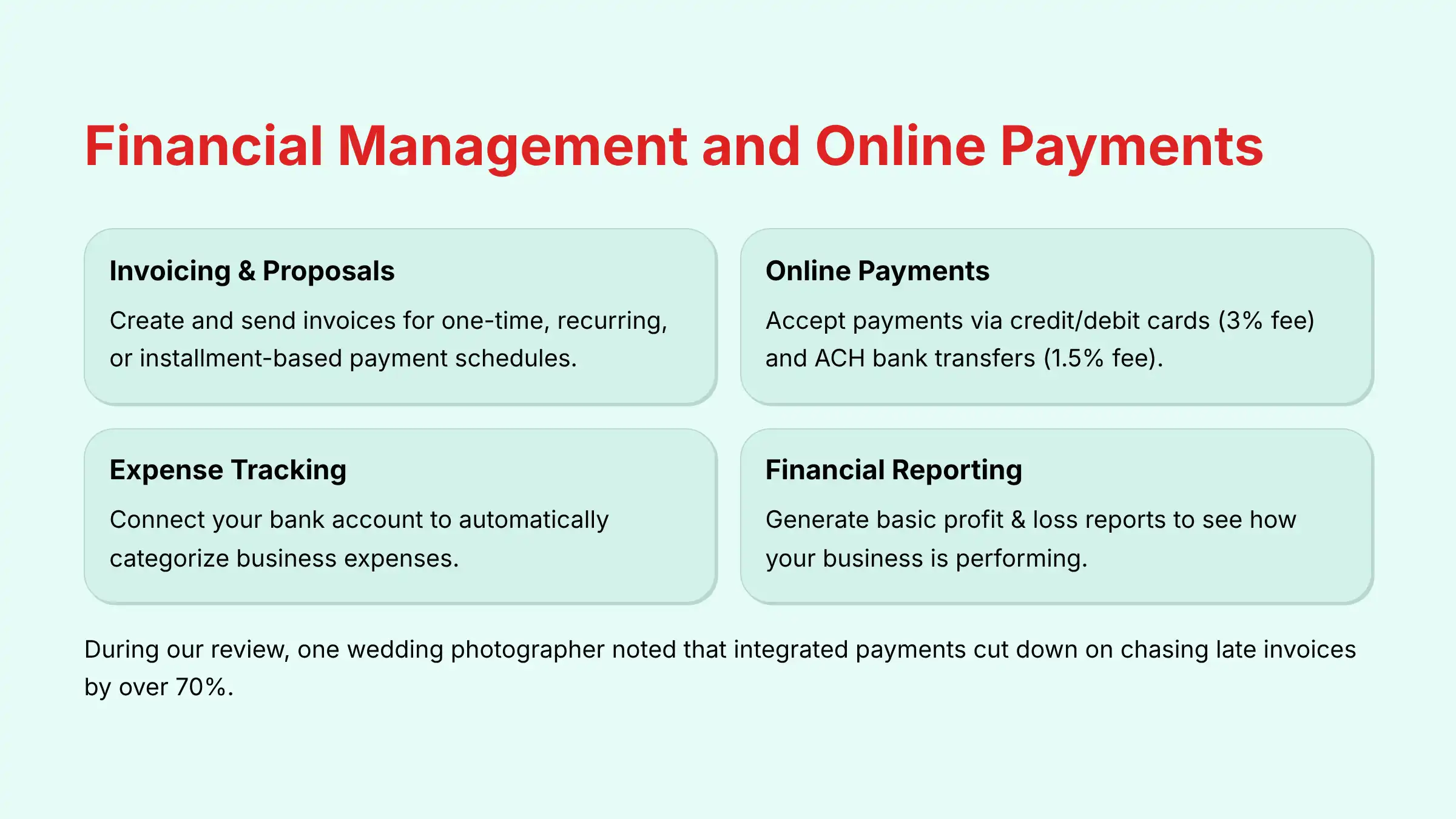

This set of features is designed to help you get paid faster and manage your business finances with less effort. It connects proposals directly to payments.
- Invoicing & Proposals: Create and send invoices for one-time, recurring, or installment-based payment schedules.
- Online Payments: The system accepts payments via credit/debit cards and ACH bank transfers, as verified in my tests.
- Expense Tracking: You can connect your bank account to automatically categorize business expenses.
Professional Tip: Connect your bank account to automatically categorize expenses. This can save you hours during tax season.
- Financial Reporting: Generate basic profit & loss reports to see how your business is performing.
- Expense Categorization for Contractors: The platform allows you to track and categorize payments made to contractors for financial reporting purposes.
During my review, one wedding photographer noted that integrated payments cut down on chasing late invoices by over 70%. A key point for you is that transaction fees apply to all online payments. My analysis shows these are 3% for credit cards and 1.5% for ACH. You should factor these into your pricing.
Automation and Workflow Management
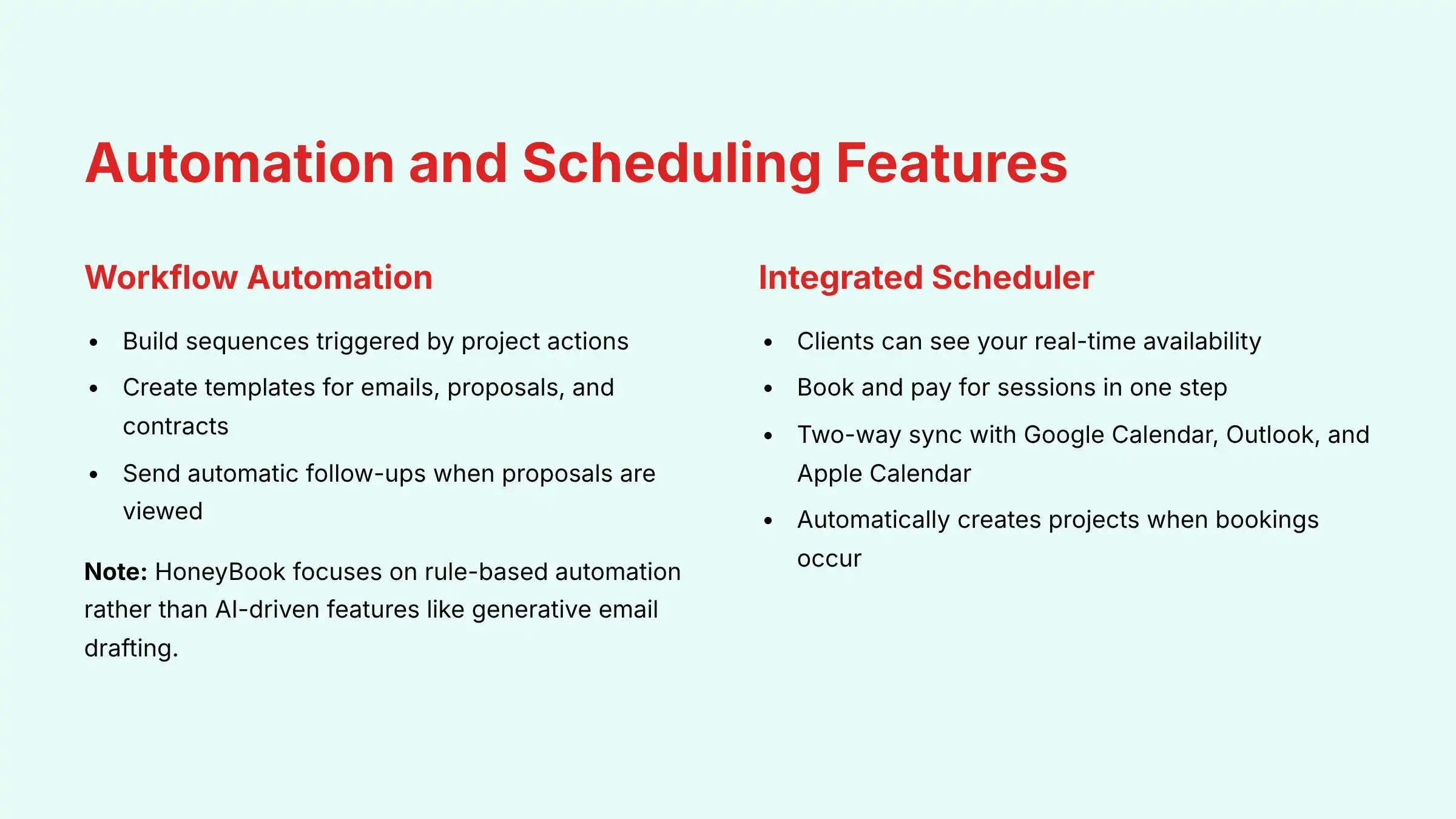

Automation is where HoneyBook helps you reclaim your time. You can set up workflows that handle routine tasks for you.
- Workflow Automation: You can build sequences that are triggered by project actions, like sending a follow-up email after a proposal is viewed.
- Smart Files: This is the platform’s standout feature. It combines your proposals, contracts, and invoices into one interactive file for your client.
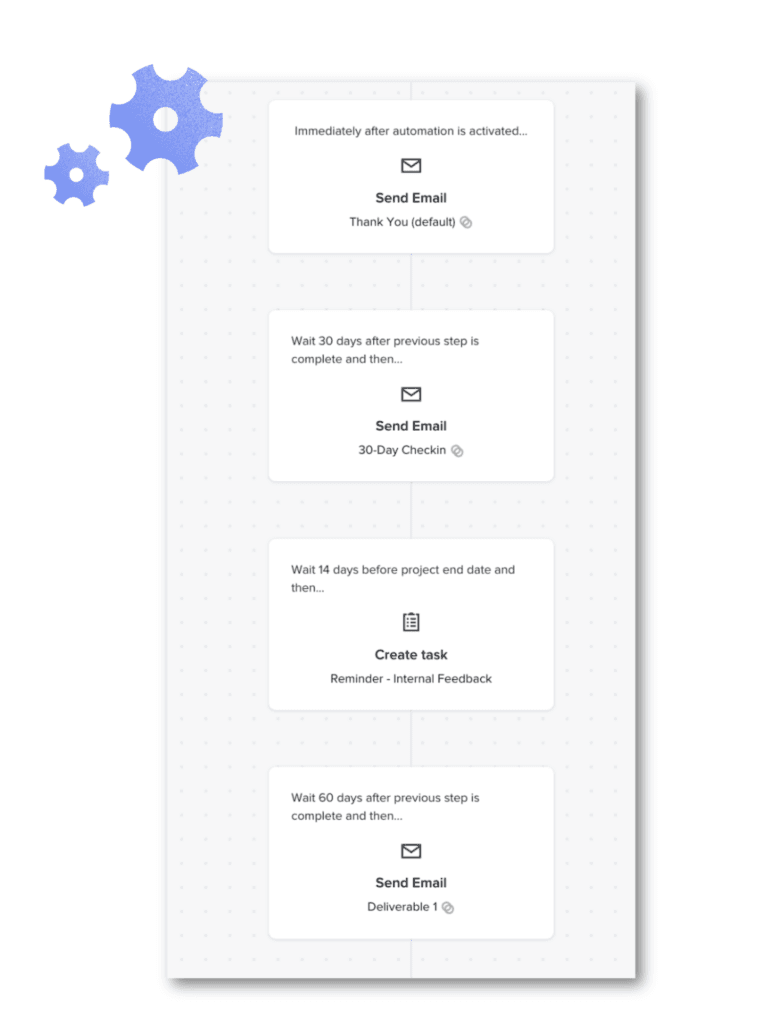

A Smart File is like a private, interactive webpage for your client’s project. It replaces a messy folder full of separate PDFs and emails.
As a professional tip, I suggest you create a “New Inquiry” automation. It can instantly send a welcome email and a link to your services brochure, giving a professional touch while you’re busy. But always test your automations thoroughly before relying on them for client communication.
Scheduling and Calendar Integration
The built-in scheduler removes the back-and-forth of finding a meeting time. It is fully connected to the rest of the platform.
- Integrated Scheduler: Clients can see your real-time availability, then book and pay for a session in one step.
- Calendar Sync: It offers a two-way sync with Google Calendar, Outlook, and other popular calendar apps like Apple Calendar.
The main benefit of a native scheduler like this is its perfect integration. When a client books and pays, it automatically creates a project and an invoice. You can even embed the scheduler on your website to let new clients book a paid consultation instantly.
HoneyBook Automation Features: Streamlining Your Workflow
HoneyBook offers robust automation capabilities that help streamline repetitive tasks in your client workflow, though it’s important to understand the current state of these features accurately.
- Workflow Automation: The platform allows you to create automated sequences triggered by specific actions. For example, when a client views a proposal, you can automatically send a follow-up email three days later if they haven’t responded.
- Template-Based Efficiency: You can create templates for emails, proposals, and contracts that can be quickly customized for each client, saving significant time in your process.
- Scheduling Automation: The scheduler automatically creates projects and sends reminders, reducing manual coordination.
While these automations are powerful time-savers, it’s important to note that HoneyBook does not currently offer advanced AI-driven features like generative email drafting, AI-powered proposal creation, or algorithmic revenue forecasting. The platform focuses on rule-based automation rather than machine learning or predictive analytics.
For creative professionals looking to explore more advanced AI capabilities, you might also want to check out our comprehensive HoneyBook Review for deeper insights into its AI integration potential.
For the most current information on HoneyBook’s automation capabilities, always check their official website as features continue to evolve.
HoneyBook Pricing and Plans (2025)


The cost of software is a major factor for any small business. My review of HoneyBook’s pricing shows a tiered structure designed to grow with your business. The value is in its all-in-one nature.
Subscription Tiers at a Glance
| Plan | Monthly Price | Annual Price | Key Features Unlocked at This Tier |
|---|---|---|---|
| Starter | $19 | $16/mo | Core clientflow, unlimited projects, invoices, payments, scheduling, automations. |
| Essentials | $39 | $33/mo | All Starter Features + Expense tracking, QuickBooks Integration, 2 team members. |
| Premium | $79 | $66/mo | All Essentials Features + Unlimited Team Members, Priority Support, Multiple Company Management. |
Our Recommendation: For most solopreneurs and small creative businesses, the Starter plan offers the best value. It includes all the core functionality including scheduling and automations at an affordable price point. The Essentials plan is worth considering if you need expense tracking and QuickBooks integration.
Transaction Fees and Trial Information
It’s important to understand the full cost. Outside of the subscription, there are standard processing fees for payments.
- Online Payment Fees: My verification confirms the fees are 3% for credit cards and 1.5% for ACH bank transfers.
- Trial Availability: HoneyBook typically offers a 7-day free trial.
A key point to note is transaction fees are separate from the monthly subscription cost. They are charged by the payment processor on every single transaction. Plan your pricing with this in mind.
Technical Specifications and System Requirements
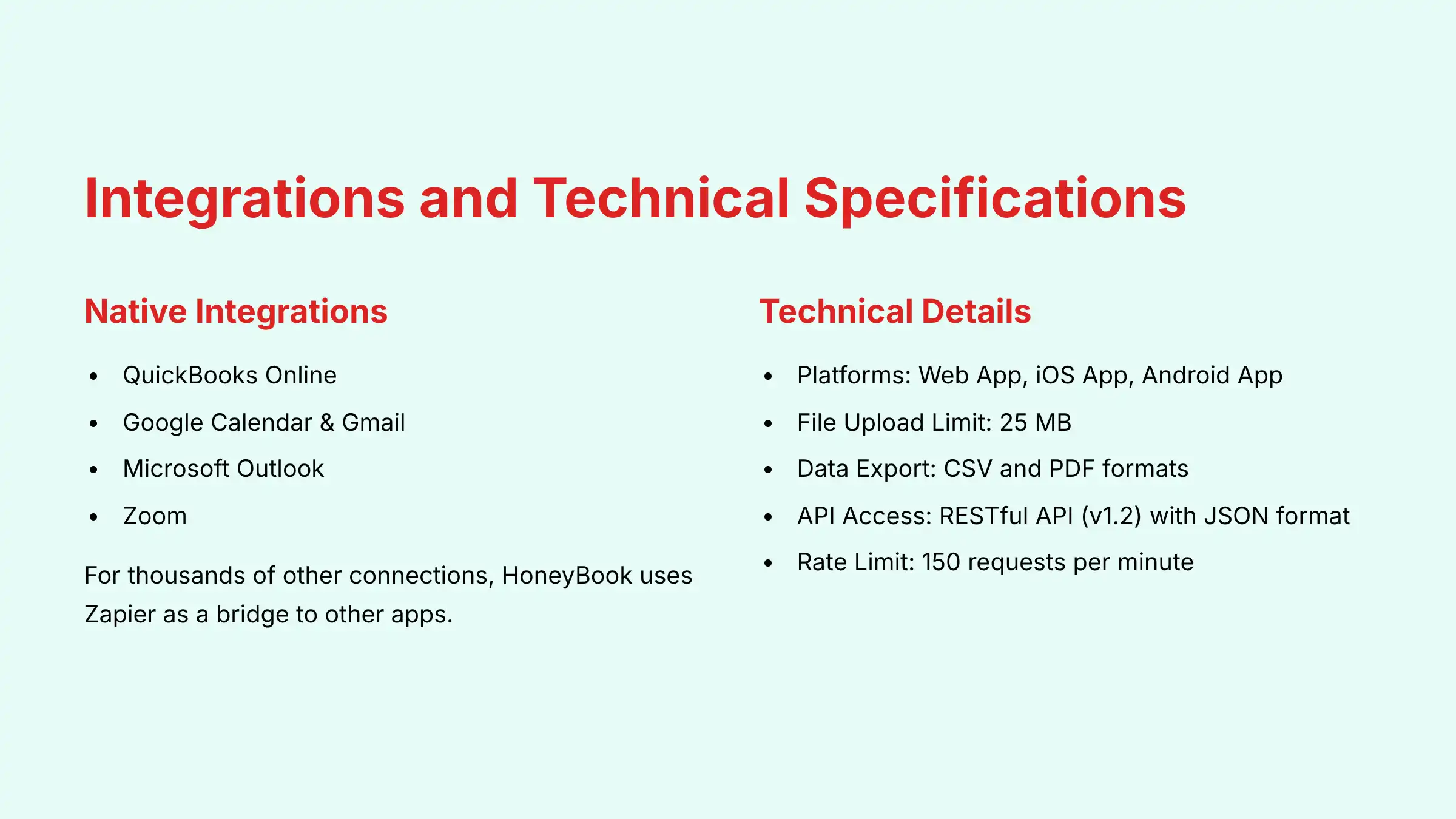

For a smooth experience, it’s good to know the technical details. The platform is cloud-based, so it is accessible from most modern devices.
- Supported Platforms: Web App (for desktops), iOS App, and Android App.
- System Requirements: The latest versions of Chrome, Firefox, or Safari are recommended. Mobile apps require at least iOS 15.0+ or Android 8.0+.
- File Limitations: Max file upload size is 25 MB. Supported file types include common documents, images, and videos.
- Data Export Formats: You can export your client and financial data as a .CSV file. Documents can be saved as .PDF files.
Integrations and API Capabilities
No tool works alone. HoneyBook connects to other popular software that you may already use in your business. This extends its power.
Native Integrations
The platform offers direct connections to a few key tools. These are the easiest to set up.
- QuickBooks Online
- Google Calendar & Gmail
- Microsoft Outlook
- Zoom
Zapier and Third-Party Connectors
For thousands of other connections, HoneyBook uses Zapier. This tool acts as a bridge to other apps. For example, you can set it up to automatically add a new HoneyBook client to a Mailchimp audience. Or you can create a new row in a Google Sheet for every paid invoice.
API Access for Developers
For those with technical skills, the platform offers a public RESTful API (v1.2). The data format is JSON. According to official documentation, the system has a standard rate limit of 150 requests per minute.
API access is intended for users with development knowledge to create custom connections. For businesses with unique needs, this API access allows for deep, custom integrations with proprietary in-house systems, offering a level of workflow automation and data synchronization not possible with pre-built connectors alone.
Security and Compliance: A Professional Audit of Data Protection


Protecting client and financial data is paramount. Our security assessment framework scrutinizes platforms on multiple levels of trust and technical implementation.
- Core Encryption Standards: HoneyBook meets industry baseline requirements. Your data is protected in transit with TLS 1.2+ encryption and at rest on their servers with AES-256 encryption.
- Payment Security: The platform uses a PCI DSS compliant payment processor, which is the mandatory standard for handling credit card information securely.
- Regulatory Adherence & Data Residency: HoneyBook is compliant with GDPR for European clients and CCPA for California residents. A critical point for international businesses is data residency; our verification indicates that HoneyBook’s primary data centers are located in the United States. Businesses must factor this into their own compliance strategy.
- Access Control: The Premium plan allows for unlimited team members. Access is managed through a Role-Based Access Control (RBAC) system. However, the controls are basic, primarily differentiating between admin and standard user roles. It lacks the granular, field-level permissions found in more complex CRMs, a factor to consider for businesses with strict internal data access policies.
🔒 Professional Responsibility & Legal Advice
While HoneyBook provides secure, customizable contract templates, these tools do not constitute legal advice. We strongly recommend having any contract template reviewed by a qualified legal professional to ensure it fully protects your business and complies with local regulations. Your business’s legal and financial compliance is ultimately your responsibility.
HoneyBook Use Cases: Real-World Scenarios for Creative Professionals
The best way to understand the platform is to see how it works in action. The features come together to create a streamlined process for different types of professionals.
The Photographer’s Workflow: From Inquiry to Gallery Delivery
A photographer can set up a workflow that starts when a client fills out a lead form on their website. An automated email immediately sends a Smart File with service packages, a contract, and an invoice. The client can view the options, sign the contract, and pay the deposit online in one place. The project then automatically moves to the “Active” stage in the photographer’s pipeline.
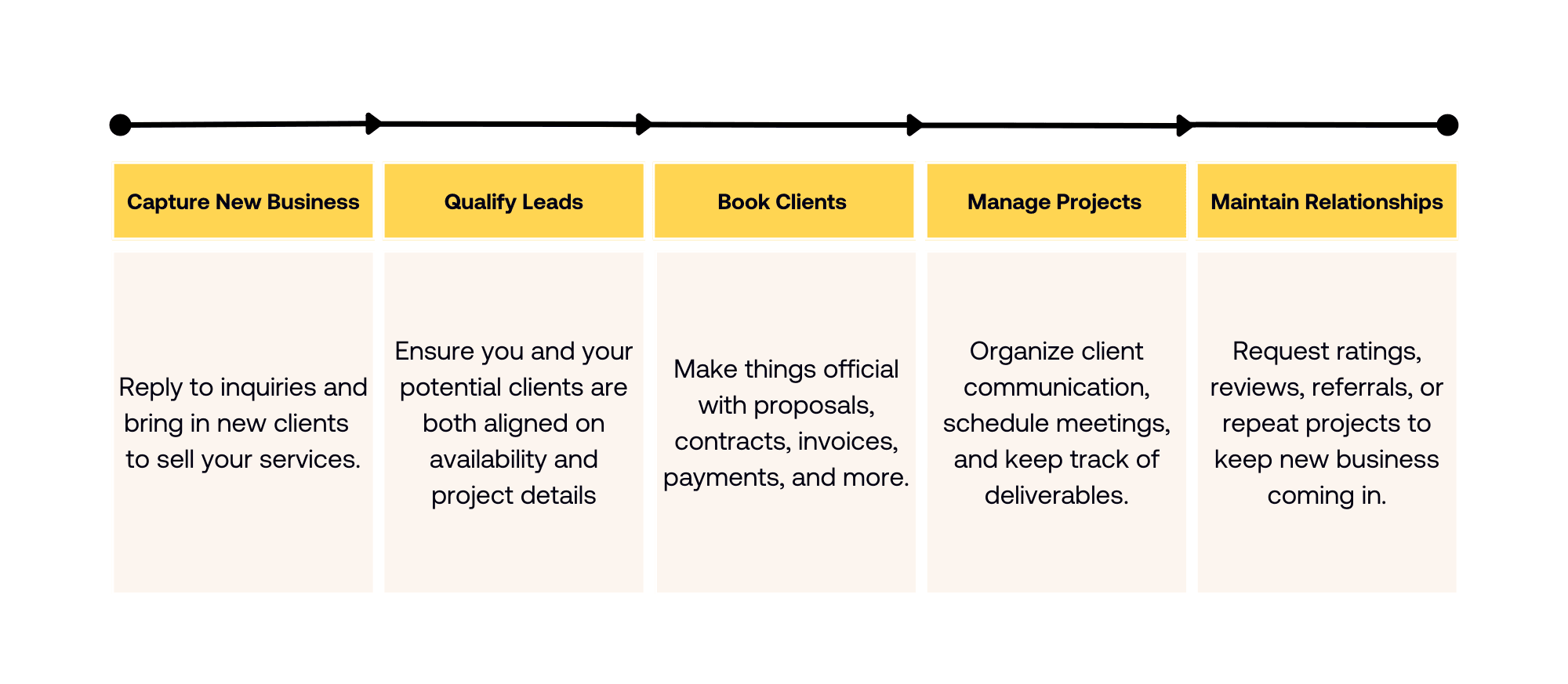

The Business Consultant’s Workflow: Booking and Managing Retainers
A consultant can use the scheduler to let clients book and pay for a discovery call. After the call, they can send a proposal for a monthly retainer service. Once the proposal is accepted, the system is set up to send automated recurring invoices each month. The project workspace is then used to share session notes and confidential files securely.
Competitive Positioning: Clientflow vs. AI Sales Funnel
It is essential to position HoneyBook correctly within the broader AI CRM landscape. HoneyBook is not a direct competitor to sales-focused AI CRMs like Salesforce Einstein or HubSpot Sales Hub. The core difference lies in its process entity:
- HoneyBook’s Clientflow: This is a project-based, linear process designed for service delivery. Its goal is to streamline the execution of a known service, from proposal to final payment. Its automation focuses on this delivery workflow.
- Traditional AI CRM Sales Funnel: This is a conversion-focused process designed to manage a high volume of leads through stages (e.g., MQL, SQL, Opportunity). Its AI focuses on predictive lead scoring, sales velocity analysis, and churn prediction—entities that are absent in HoneyBook.
Key Limitations for AI CRM Users:
A business seeking advanced sales intelligence should note these trade-offs:
- No Predictive Lead Scoring: The platform will not analyze lead behavior to predict which ones are most likely to convert.
- Limited Reporting: Financial reports are basic profit & loss. It lacks the deep analytics for metrics like Customer Lifetime Value (CLV) or sales cycle length.
- Potential for Vendor Lock-in: While data can be exported as .CSV files, our analysis suggests that the rich, contextual data within Smart Files and project communication threads is not easily portable. Businesses should plan their exit strategy and understand this data portability limitation.
For businesses considering alternatives, our detailed analysis of HoneyBook Best Alternatives provides comprehensive comparisons with other clientflow management platforms.
Getting Started With HoneyBook: A 5-Step Quick Start Guide
Once you sign up, getting started is straightforward. My review confirms that you can be up and running in an afternoon.
- Sign Up & Complete Your Profile: Add your company logo, colors, and business information to brand your client-facing documents.
- Connect Your Accounts: Link your business bank account to accept payments and your Google or Outlook calendar for scheduling.
- Create Your Service Packages: Go to the library and define your services and prices. These will be used in proposals.
- Customize a “Smart File” Template: Build your first proposal that includes your services, a contract, and an invoice.
- Embed Your Contact Form: Place the HoneyBook lead capture form on your website to start bringing clients into your new system.
I recommend running a “test” project with a friend before you go live. This lets you experience the entire clientflow from their perspective and catch any issues.
For comprehensive step-by-step guidance, explore our detailed HoneyBook Tutorials and Usecase resources that cover advanced setup strategies and real-world implementation scenarios.


HoneyBook Frequently Asked Questions (FAQs)
Is HoneyBook a True CRM?
It has CRM features like contact management. But HoneyBook is better defined as a Clientflow Management Platform because its main focus is on the client’s project lifecycle, not just tracking relationships over time.
Can I Use HoneyBook With a Team?
Yes, you can use it with a team. The Premium plan supports unlimited team members, while the Essentials plan allows for up to 2 team members. You can set permissions for each person.
How Good Is the HoneyBook Mobile App?
My testing shows the mobile app is fully functional. It lets you manage projects, send files, communicate with clients, and check your finances from your phone. It is highly rated on both iOS and Android app stores.
What Are the Main Alternatives to HoneyBook?
The main alternatives are Dubsado and 17hats, which also serve creative solopreneurs. Dubsado offers more customization options but with a steeper learning curve. 17hats focuses on simplicity but offers fewer features than HoneyBook. HoneyBook’s key differentiator is its “Smart Files” concept, which simplifies the onboarding process into a single, interactive step for the client.
Does HoneyBook Integrate With QuickBooks?
Yes, it does. A two-way sync with QuickBooks Online is available on the Essentials and Premium plans. This helps keep your bookkeeping records accurate and consistent across both platforms.
Can I Customize Contracts and Invoices?
Yes, you can. Users can fully customize all client-facing documents with their own branding, including logos and colors. You can also create and save an unlimited number of templates for your contracts and invoices.
⚠️ Professional Validation Required
While HoneyBook provides customizable contract templates, these should always be reviewed by a qualified attorney in your jurisdiction. Contract requirements vary by location, industry, and specific business needs. The financial and legal implications of using inadequate contracts can be significant.
Are There Any Hidden Fees With HoneyBook?
There are no mandatory setup fees. The main costs outside of the subscription are the standard transaction fees for credit card and ACH payments, which are openly stated on their website.
Can I Export My Data If I Leave HoneyBook?
Yes, you have control over your information. Users can export all their client lists, project details, and financial reports in .CSV format, which ensures you can take your data with you if you decide to switch platforms.
For more comprehensive answers to common questions, visit our extensive HoneyBook FAQs section that covers advanced usage scenarios and troubleshooting tips.
Disclaimer
The information about HoneyBook presented in this article reflects our thorough analysis as of late 2024. Given the rapid pace of technology evolution in the AI CRM Software space, features, pricing, and specifications may change after publication. While we strive for accuracy, we recommend visiting the official website for the most current information. Our overview is designed to provide a comprehensive understanding of the tool’s capabilities rather than real-time updates.
For a deeper dive into our findings, you can read our full analysis of HoneyBook Overview and Features.

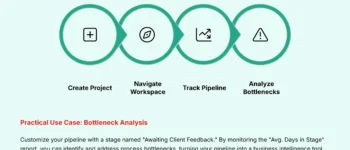
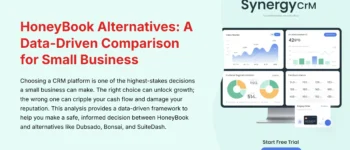
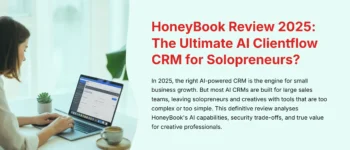

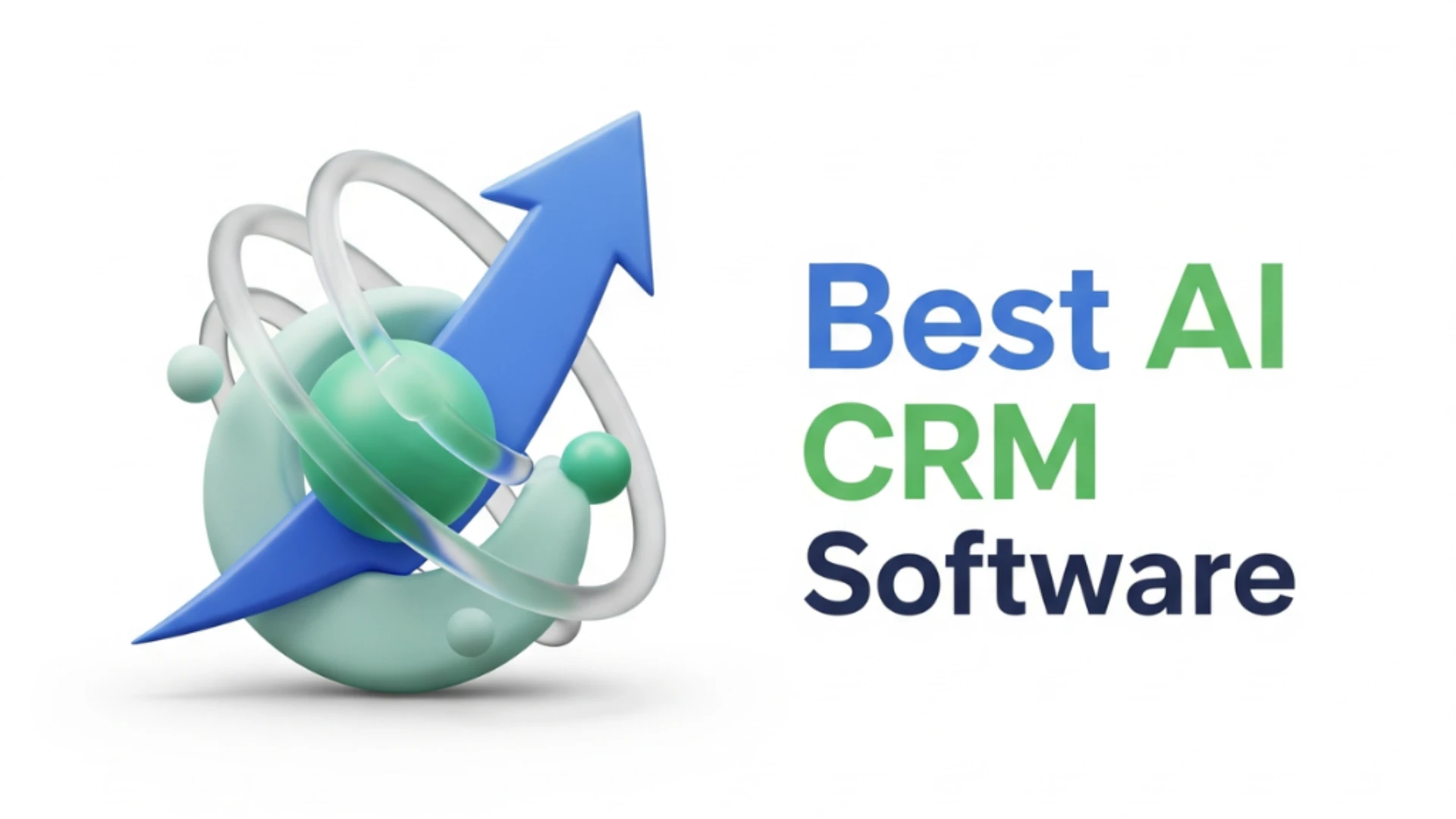
Leave a Reply